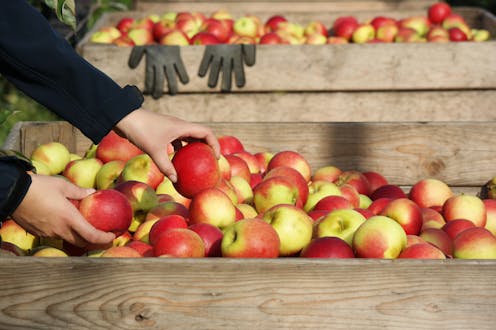It’s getting even harder to find full-time work. So more people are taking second part-time jobs

Over the last two years, growth in wages and salaries have not kept up with rises in the cost of living.
The Australian Bureau of Statistics estimates the cost of living for the average “employee household” rose by 16.7% in the two years up to December 2023.
In contrast, average wages, as measured by the Wage Price Index, rose by only 7.7% over the same period.
As a result, many workers have had to either cut back on spending or find ways to supplement their regular income. Perhaps the simplest strategy, especially when demand for labour is strong, is for households to increase their working hours.
This might involve family members who previously did not have paid employment seeking work, or individual household members seeking either more paid overtime or a second job.
Making ends meet
Surveys suggest more people are taking up the option of a second job.
One survey released last month by comparison website Finder reported 32% of respondents felt financially pressured to work more than one job.
But it is difficult to take such large estimates seriously when the Bureau of Statistics’ Labour Force Survey suggest fewer than 7% of workers in February 2024 were underemployed and therefore would prefer to work any extra hours, let alone a whole additional job.
Read more: 1 in 5 Australian workers is either underemployed or out of work: white paper
So what then do we really know about how common it is in Australia for people to have more than one job?
The gold standard for measuring the number of people with more than one job is again provided by Bureau of Statistics, this time in the form of its quarterly Labour Accounts, which is drawn from a range of data sources including the Labour Force Survey.
The graph below uses this data to show how the proportion of employed workers with more than one job during a specific week has changed since 2000.
The growing trend
For most of this century the proportion of employed people who report having more than one job has varied between 5% and 6%. But this has been trending upwards in recent years. It reached 6% by the end of 2018 and remained at or near that level until the start of the pandemic.
The rate fell sharply during 2020, reflecting the impact of the lockdowns, but by the end of 2021 (before the surge in the cost of living) it had risen to 6.3%. Two years later, this proportion stood almost half a point higher at 6.7%.
Multiple job holders are therefore estimated to represent a large number of workers as 6.7% of the workforce equals about 970,000 people. More women than men work multiple jobs and most are aged 20 to 24.
As the cost of living has increased, we can assume the number of multiple job holders has only grown.
Read more: We need more than a definition change to fix Australia's culture of permanent 'casual' work
However, that increase has been relatively small. There are only about 110,000 more multiple job holders than there were two years earlier in December 2021 (when the official interest rate set by the Reserve Bank stood at an historic low of just 0.1%). This compares with a total employed workforce of more than 14.5 million.
Misconceptions about multiple job holders
One possible misconception is the typical multiple job holder works a second job, most likely at nights, or on the weekend, on top of a regular full-time job. While this is accurate for some, most people with more than one job actually work part-time in their main job.
According to yet another large survey, the Household, Income and Labour Dynamics in Australia Survey, almost 64% of multiple job holders in 2022 worked part-time (defined here as usually less than 35 hours per week) in their first job.
Multiple job holding is therefore, in part, a result of a lack of full-time jobs in many industries.
This underscores another reason why we would expect multiple job holding to have risen in recent years.
Plenty of jobs, but mainly part-time
While the number of people taking on multiple jobs has increased in Australia in recent years, the rise has been relatively small.
Cost-of-living pressures have driven some of this modest increase, but also at play has been a labour market where jobs are plentiful but many of those jobs are only part-time.
This means some of the rise in people with multiple jobs will be because they can’t get the hours they need in their primary job, not because they want to work more hours overall.
Read more: Albanese government to Fair Work Commission: Don't let real wages go backwards for the low paid
Authors: The Conversation















